Tell us what you think about this “Wisconsin Life” episode. Take the survey!
– The following program is a PBS Wisconsin Original Production.
– Coming up on Wisconsin Life: [motor puttering] Meet a scientist studying underwater plants, [camera shutter clicking] a teen with a sky-high hobby, [airplane engine] a pair of friends creating candy concoctions, [clacking] and a sound engineer pressing for a record revival.
That’s all ahead on Wisconsin Life!
[uplifting guitars, strings, piano, and drums] – Announcer: Funding for Wisconsin Life is provided by the Wooden Nickel Fund, Mary and Lowell Peterson, the A.C.V.
and Mary Elston Family, the Obrodovich Family Foundation, the Stanley J. Cottrill Fund, Alliant Energy, UW Health, donors to the Focus Fund for Wisconsin Programs, and Friends of PBS Wisconsin.
– Hello, and welcome to Wisconsin Life.
I’m your host, Angela Fitzgerald.
We’re getting a special look inside the State Archive Preservation Facility, home to thousands of artifacts from our state and beyond.
The 188,000-square-foot state-of-the-art facility is in the heart of Madison, off the Yahara River.
[chipper theatrical music] The collection, with more than 290 million objects, feels endless and includes artifacts large and small, like films, fine art, clothes, books, documents, and more.
The building is owned and managed by the State Department of Administration and houses collections from multiple state agencies.
Each artifact and collection requires specific environments to protect and conserve them, like cold storage for film or a multi-year chemical bath to treat a dugout canoe that’s more than 3,000 years old.
We’ll learn more about the behind-the-scenes work being done here to preserve our past for future generations.
[shimmery music] But first, we take off to Milwaukee to join a teen whose hobby keeps him looking up.
[guitar chord strum] [plane engine roars] [playful guitar picking] Nothing excites teenager Max Gabb more than airplanes.
– Yeah, coming in next… from La Guardia.
– Max is all about tracking, identifying, and photographing planes.
– Max: Oh, and there’s the Chicago plane.
Everything’s coming at once.
[camera shutter clicking] There’s a bunch of spots around the airport to do it, and anyone can do it.
[shutter clicking] – His hobby is called “plane spotting.”
– Max: Departures on one runway and arrivals on the other.
[camera clicks] All right.
I started doing this during COVID as a goal to bike.
[upbeat synthesizer] Every morning, I look on the flight radar.
If there’s something coming in, I’ll get my camera equipment and bike over and spot it.
– Jamie Gabb: He needed something to get out of the house.
I mean, you couldn’t do much.
Biking was a good thing to do.
And he’s, “I’m going out to the airport.”
[Max pedaling] [music, birds chirping] – On this day, Max takes his dad, Jamie, along… – Dad, it’s up here.
– To a favorite perch near Milwaukee’s Mitchell International Airport.
– Jamie: I like this spot a lot.
– Max: Yeah, it’s really nice.
[airplane engine noise] – Max: Ooh!
There’s a C-130 coming in.
Wow!
– While the C-130 is still off in the distance, Max has his sights set on another unique aircraft.
– Max: This is the one that I’m really, I’m here for.
– There’s only one plane like it in the world.
– Yeah, Colorado One’s next.
It’s currently about to cross the state line.
Nope, it is in Wisconsin.
There’s a lot of planes in the world, and a lot of them are rare for Milwaukee’s airport here.
When the rare ones come in, that’s when it’s really fun to get the planes.
[airplane engine, wheels on tarmac] Max: It’s about to go on final.
No more turns; it’s straight for the runway, lined up, and ready to land.
[camera shutter clicks] It’s special, painted as the state flag of Colorado.
I really like that one.
That’s probably one of the better ones they have.
– With Colorado One on the ground… – I’m gonna look at the schedule and see… – Max gets another hit on a plane incoming.
– Max: And then, this is a United plane that’s coming in to take the Orioles back to Baltimore.
They are playing right now, the Brewers are.
[shutter clicks twice] – In just a few years… – Max: This is a Delta A321 from Atlanta.
– Max has already spotted more than a thousand aircraft.
[shutter clicking] – The best spotting experiences I’ve had is probably Air Force One, back on Labor Day when the president came to Milwaukee.
Another experience, there were four McDonnell Douglas Harriers, very rare.
They didn’t do the vertical takeoff or landing, but still, it was really awesome to see.
[jet engine roaring] – To see Max so excited, it might surprise you that his fascination started from the fear of flying.
– I was afraid of planes, originally.
– Jamie: There were times where it was not always fun to sit next to Max.
He just did not like the turbulence.
So, he started to calm down and he did his research.
– Max: Let’s flip it.
Literally, all of it opposite.
I kind of like light turbulence now.
It gives for an interesting ride.
– Good thing Max now enjoys air travel because his plane spotting has expanded well beyond Wisconsin’s borders.
[camera clicking] – I’ve gone to Fort Lauderdale, Orlando, Vegas and Utah and Denver.
And in St. Martin, the airport with the beach, where the planes are a few feet above the beach goers.
It looks really cool.
[loud engine overhead] – Max also makes it easy to track his aviation adventures.
– Max: I like to edit videos and do media for planes.
Post it to my Instagram and YouTube later.
[airplane accelerates] – It was definitely a successful trip, [zipping bag] even though the C-130 didn’t end up landing here.
– As a young boy, Max faced his fear, and now, he has sky-high dreams.
– Yeah.
[laughs] I’ve wanted to be an airline pilot when I knew all the things that I know about planes.
– That would guarantee Max the best seat for plane spotting… [camera shutter clicks] turbulence and all.
– Jamie Gabb: It’s nice to see that he is a self-starter and can focus on what he really enjoys.
Be it his schoolwork or his plane spotting, for sure, yeah.
[sunny, lighthearted vocals] [shimmery music] – Now, we head to Brockway in Jackson County to meet a scientist studying aquatic plant life to keep our waterways healthy.
[wind blowing] – Sara Hatleli: I see plants.
I see natans.
I don’t consider myself a business person.
I was just sort of a biologist who kind of stumbled into this.
[boat motor purrs] – My name is Sara Hatleli.
I’m with Aquatic Plant and Habitat Services, LLC.
My business offers services related to lake surveys, specifically aquatic plant surveys, aquatic invasive species monitoring.
To summarize, it would really be aquatic botany.
[upbeat marimba] We humans like to recreate on a lake, either boating, fishing, swimming.
Anybody who fishes knows that aquatic plant beds are a good place to target when you’re casting and looking for certain species of fish because aquatic plants provide structural habitat for not only fish, but what the fish eat.
Structure for those complex interactions to occur among the native animals of that area of that lake.
So, I’m usually the one doing the raking.
And then, my field technician, Andrea, is the one usually driving.
[boat motor rumbles] And we go from sample point to sample point in a boat.
Once we arrive at a sample point, I have a two-sided rake.
And I take that two-sided rake, lower it down until it’s touching the bottom.
– Sara: Four feet.
And twist that rake a couple of times, and we pull it up, and see what we can find.
Sara: We’re gonna give that a one.
Total rake of one.
Milfoil, one.
I kind of call out the numbers.
Andrea records the data, and we move on.
And we do that at least 200 times in a day.
And I try to take that information to a lake group, and help them feel excited about it, too.
By the way, Brandy Lake, I mean, it’s not great that there’s milfoil, but it’s great that you have all these surveys.
Because most lake groups just getting started with management…
It could very much just be a group of people around a lake who have a concern.
I think lake groups just want to know, “Are we doing the right thing?
Are we on the right course?”
So, anytime that your native plant species can be left, it’s one less spot for invasive species to colonize.
[splash] If they’re coming to the meeting, and the word that is being used is “weeds,” I will say, how about we try saying “plants?”
Sara: Yeah.
– Man: What’s the benefit of that weed?
– The plant, you mean?
– Man: Yeah.
[audience laughing] – I know this one.
I think just using the word “plants” makes us think about those organisms in a different light.
This one is Nitella.
So, we went, you know, I went and sampled all of these in a kayak.
I started my business very small.
I actually was planning to only do it for a couple of years.
And I thought, “Well, I’ll try this for a little while and see how it goes.”
And that was 12 years ago.
And so, it’s still working and I’m still loving it.
[laughs] I’m hoping that my impact is promoting the view of aquatic plants in a more positive way and just seeing how much they benefit us rather than how much they’re in our way.
[shimmery music] – We’re touring the State Archive Preservation Facility in Madison to learn about historical conservation.
[whimsical theatrical music] I started my archive adventure by chatting with Christian Overland, the Wisconsin Historical Society Director and CEO.
– Overland: Well, the State Archive Preservation Facility is actually where all Wisconsin’s historic treasure is housed.
I think of it, actually, as the nerve center of everything that we do.
We have everything from film to 3D objects.
We have archives.
We have library materials here, too.
– Are there just items from Wisconsin that are stored here or from other places as well?
– What’s fascinating about the Wisconsin Historical Society, we’re the only state historical society in the union that’s charged to collect North American history, as well as Wisconsin history.
So, we can tell the story of Wisconsin in the context of the United States.
– That’s amazing.
Approximately– and I know this may be hard to give an exact number– but approximately how many items are you all storing in this space currently?
– In this space, you’re thinking about archival materials, libraries, and 3D artifacts, and film.
We’re in the couple of hundreds of millions.
– Wow.
– It’s a huge collection.
It’s an extraordinary space.
– An extraordinary space filled with extraordinary relics from the past.
Estella Chung, Chief Curator, showed me just a few of the awe-inspiring artifacts stored here.
– Estella Chung: With our first stop, we’re really looking at something that evokes the sky and the air.
And this ultralight is from Operation Migration and it helped establish the Whooping Crane more firmly in North America.
– Oh, wow.
– And if you can imagine a pilot wearing a bird costume.
So, we’re really happy to have it in the collection.
– From Wisconsin’s natural history, Estella brought me back on land to check out Tesla’s Dynamo, a shawl Abraham Lincoln wore while traveling to his inauguration, and a rich collection of historical periodicals.
– Estella Chung: Here is a anti-slavery publication called “The Emancipator.”
And if you look at this date here, it dates to 1836.
So many interesting things in here.
– Then, we dove into the world of entertainment.
– And from “Happy Days,” there was one episode where Fonz was accidentally enlisted.
So, we have the Fonzarelli jacket from the US Army.
Also have in the collection, celebrities that are from the state.
And Chris Farley is from Wisconsin.
And we have this really fun prop from the film “Beverly Hills Ninja.”
Pardon me as I open this up [laughing] so you can see it.
But really, really fun.
– Angela: Learn something new.
– You always learn something new when you research in our archives.
– Thank you so much for your time today.
– Oh, it was a pleasure just to share some of the highlights that we have in the collection.
[playful theatrical music] [shimmery music] – Next, we leave the world of curated collections for candy as we catch up with a pair in Appleton with a recipe for success.
[friction, motor noise] Owning a candy shop could seem like the fulfillment of a childhood dream.
– Orson Fournillier: All of the truffles.
– Yaw Asare: Uh-huh.
– But for these two immigrant entrepreneurs, it’s just one step toward a greater ambition.
– Yaw: How about the cherry cluster?
– Orson: Hey, one step at a time.
When we started, there was a growing stigma about immigration and immigrants.
We felt that there was an opportunity for us to do a little bit to make positive associations.
First time here?
– Yes.
– Can I give you a grand tour?
– Sure.
– All right.
– Orson Fornillier: I truly believe food bridges gaps.
– Manufacturing executive Orson Fornillier was born in Trinidad, but fell in love with Wisconsin.
– Orson Fornillier: Came up here, interviewed, and found that the people were so warm, so inviting.
All day, every day, talking it up.
– Yaw Asare worked in banking after he came from Ghana to attend Lawrence University, but he always had the desire to start a business.
– Yaw Asare: My dream is to be able to go ahead and sort of like, quote-unquote, “own your own business,” right?
– The two met at Appleton’s Juneteenth celebration, where Yaw had a booth selling African masks.
They soon learned they had common interests.
– I think we’ve seen almost every Marvel movie together.
So, we’ve pretty much bonded over that.
[Drax the Destroyer yells] It’s our love of cinema that is part of the underlying friendship that we have.
– Grab a plate.
– Grab a plate.
– And they definitely bonded over food.
– Watch it, watch it!
– Especially food from Yaw’s home country of Ghana.
– Yaw: The food tastes great.
Lots of flavor.
Everything is, I mean, cooked from the ground up.
– But Orson and Yaw connected the most when talking over ideas for a business startup.
– Orson: He’s got a treasure trove of ideas, right?
He’s got an idea every day.
– Yaw: I’m the guy who’s, like, all over the place, like, I’m like a squirrel, just kind of, and he sort of, like, pulls me back.
– Orson: “Good idea.
This one’s gonna be difficult.”
Or, “Good idea.
There’s no way we’re gonna do that.”
– Many of their ideas centered around food and sharing their culture.
– Orson: Something that I really wanted to see if we can popularize African cuisine and sort of get it into people’s consciousness.
– Yaw: That hit a sweet spot because I’ve always said within the community, we should be offering our foods outside of our community.
It is excellent food.
It’s wonderful food.
– Ghana’s lively street food scene held many possibilities.
Yaw found inspiration in his childhood memories of a favorite candy snack.
– Yaw: Nkatie cake in Ghana, which just literally means “peanut cake.”
It’s a form of brittle, Ghana-style brittle.
I went into the kitchen, I played around with the formulation and all that kind of stuff for the brittle and started giving it to family and friends, saying, “Hey, this is pretty good.
“You should try it out.
Let me know what you think.”
– Orson: And the moment I ate that, I go, [snaps fingers] Yaw, this is it.
– The kitchen experiments resulted in Sharay’s Ghana-style Brittle, using Yaw’s childhood nickname.
The duo introduced the product at farmers’ markets in the Fox Valley.
– It’s the not-too-sweet nutty treat that doesn’t stick to your teeth.
– Mm, superb.
– Orson: One of the beautiful things about this area was that people were just so welcoming of the idea and of us.
And that gave us the confidence, “Okay, if we can do it on our home market, well, we can do this everywhere.”
– Doing it everywhere, like grocery stores and specialty shops, means scaling up, an expansion that meant increased production.
The solution?
Buy the candy shop where they had contracted for small production runs.
So, Yaw and Orson are like two kids in a candy shop.
– Yaw: Ghana-style brittle, very different from your traditional brittle.
It’s easy to bite into.
You get rich nut flavor.
– It’s a story that Orson sees as worthy of the Marvel movies he and Yaw love to watch, and nearly as improbable.
– Orson: It’s like, this thing shouldn’t exist.
But yet, I’m watching it.
It almost feels like this is what we’re doing with our immigrant experience and the business, it shouldn’t really exist, but yet, you’re living it.
– Brittle is just the beginning.
The start of a vision of sharing beloved treats from West Africa, in Wisconsin, and beyond.
– We really wanna get a line of West African snacks that we can put out there for people to go ahead and try and enjoy.
– What do you think?
– I think it’s pretty good.
– I love that reaction.
– So, I wanted to showcase that something good comes from Africa.
And that’s kind of like the story that I’ve been trying to tell.
[shimmery music] – For our final story, we tune in with a Springfield sound engineer, pressing for a vinyl revival.
[upbeat music] – Dave Eck: Music’s been following me around most of my life.
– Dave Eck is a music man.
– One of these records has got Mick Jagger on it.
– He has an ear for that nostalgic sound.
– This one’s pretty cool.
King Khan, it’s an indie band.
– There’s a Neon Leon.
These guys do vinyl still.
They’re part of my culture, at least.
– It is a music culture Dave grew up with as a vinyl junkie.
– This is one of the earliest records I ever bought.
The Cure “Boys Don’t Cry.”
It is such a great record.
I used to spend like $100 a week at B-Side Records down on State Street.
I just started using a lot of that money to fuel my addiction.
I’ve bought so much stuff.
– Collecting vinyl and a love of music led to a career in the record industry.
– I’ve done mixing, mastering, vinyl pre-production, a lot of restoration.
I’ve had the privilege to cut and vinyl master artists as big as Maroon 5 and the Jackson 5.
Yeah, I was really happy with how that came out.
I didn’t keep everything.
I kept the essentials.
[laughs] Tom Tom Club.
– At a time when vinyl was in a death spiral, Dave decided to ride the wave.
– These machines and the pressing machines became ignored and just got put in garages and dumps.
– His basement in Middleton is home to this high-tech German lathe that cuts the grooves.
– The magic’s prepping it.
We can clean up every little imperfection.
[fast-paced singing] I find it a challenge to create that perfectly juicy pre-master that is very vinyl-friendly.
It’s fun to cut it and play it back ’cause it always sounds better after you play it back on vinyl.
And I enjoy that part of it.
– As a sound engineer, he has fine-tuned and remastered tens of thousands of classic hits.
Dave recreated the soundtrack of his life.
– I grew up with Depeche Mode.
A lot of stuff I grew up with, the Dead Milkmen.
Of course, the Jacksons, the Buzzcocks.
I’ve really enjoyed the challenge of creating what I used to listen to when I was a kid.
– Dave saw the resurgence of vinyl records coming and took a gamble, [rock music] opening Waxy Poodle in Cross Plains.
– Dave: We’re a record-pressing company.
We’ve done well over 200 titles our first year.
– The first Wisconsin record-pressing company to open in nearly 100 years.
– We have to load it with PVC.
We have to load it with center labels.
A side goes on top, B side goes on bottom.
– With the demand for vinyl records surging, this machine is always spinning.
– Dave: This thing just, it just shoots records out.
– Waxy Poodle can press a record every 25 seconds, 3,500 each day.
– We’ll get country people to come in here just to do 100 records.
It’s not just the indie scene kids; the cool kids doing it.
‘Cause people need merch to sell, you know, and it’s snazzy.
It’s transparent.
There’s something about that product, at the end, the record and the art and everything.
– Mass-producing albums is an art and a science in an industry where vinyl has now eclipsed CD sales.
– Dave: I think people are just realizing it’s better, and, you know, they made a mistake.
It’s kind of what happened.
I hate to say it, but [laughs] I’ve been here watching.
We’ve been riding, you know, the rollercoaster of the vinyl boom ever since.
– Dave helped vinyl make a comeback, and now, there’s no turning back.
– It’s here to stay.
Yeah, I got really lucky and it just kind of snowballed from there.
[shimmery music] – Angela: Our time at the State Archive Preservation Facility has been one for the record books.
We’ve learned about our state’s past while telling stories from our present.
Find more at WisconsinLife.org.
Email us your ideas at [email protected].
Until our next ride, I’m your host, Angela Fitzgerald, and this is our Wisconsin Life.
Bye.
[uplifting guitars, strings, piano, and drums] – Announcer: Funding for Wisconsin Life is provided by the Wooden Nickel Fund, Mary and Lowell Peterson, the A.C.V.
and Mary Elston Family, the Obrodovich Family Foundation, the Stanley J. Cottrill Fund, Alliant Energy, UW Health, donors to the Focus Fund for Wisconsin Programs and Friends of PBS Wisconsin.
Search Episodes
Related Stories from PBS Wisconsin's Blog

Donate to sign up. Activate and sign in to Passport. It's that easy to help PBS Wisconsin serve your community through media that educates, inspires, and entertains.
Make your membership gift today
Only for new users: Activate Passport using your code or email address
Already a member?
Look up my account
Need some help? Go to FAQ or visit PBS Passport Help
Need help accessing PBS Wisconsin anywhere?

Online Access | Platform & Device Access | Cable or Satellite Access | Over-The-Air Access
Visit Access Guide
Need help accessing PBS Wisconsin anywhere?

Visit Our
Live TV Access Guide
Online AccessPlatform & Device Access
Cable or Satellite Access
Over-The-Air Access
Visit Access Guide
 Passport
Passport






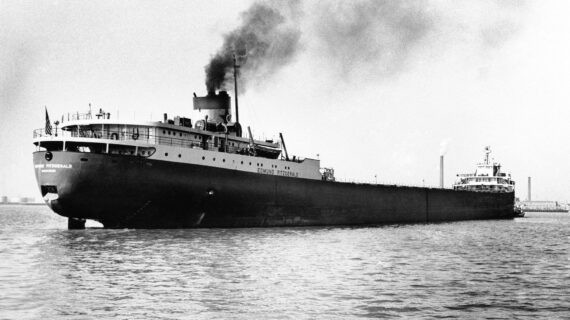

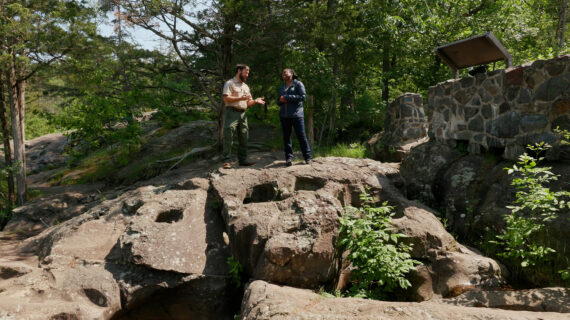
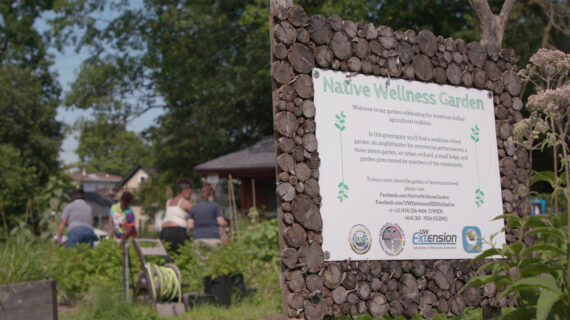

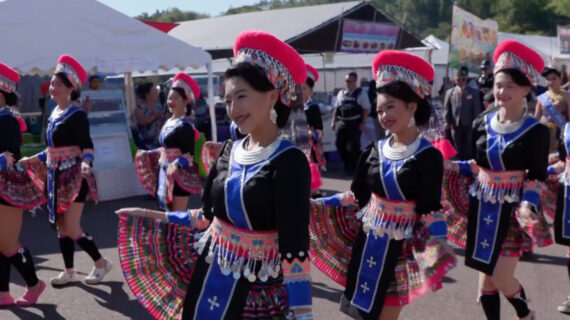
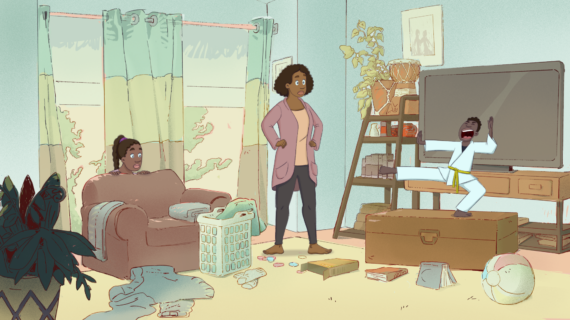
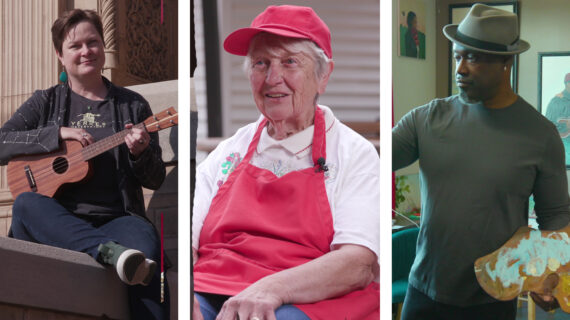
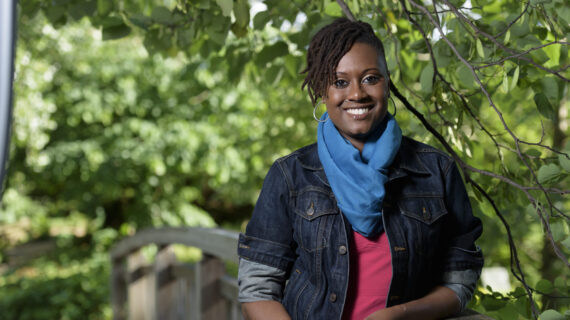

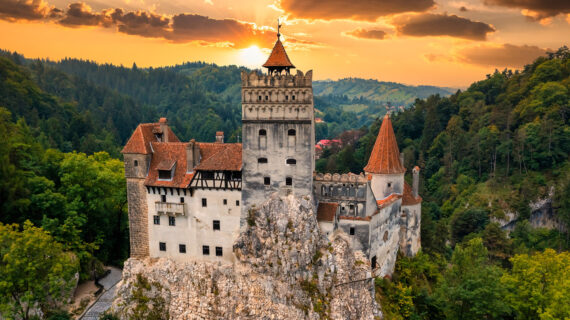

Follow Us